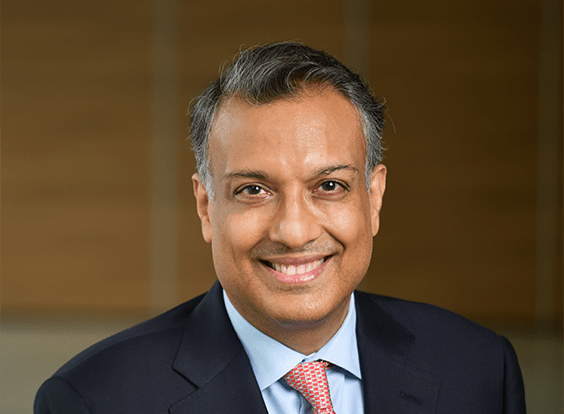India’s ReNew, a subsidiary of ReNew Energy Global, is aiming to develop several green hydrogen projects in India and overseas while also exploring other decarbonization solutions amid global efforts to seek cleaner alternatives to expedite energy transition, Chairman and CEO ReNew Sumant Sinha told S&P Global Commodity Insights in an interview.
Register Now India unveiled its National Green Hydrogen Mission Jan.14 with a support package aimed at making the country an electrolyzer manufacturing hub and garnering a 10% share of global renewable hydrogen trade by 2030. Green hydrogen is made via electrolysis using renewable power.
Green hydrogen is critical to decarbonize hard-to-abate sectors — steel, fertilizers, refineries, aviation — Sinha said on the sidelines of India Energy Week being held over Feb. 6-8.
“We are looking at developing projects in India for the Indian market, in conjunction with our JV partners IOC and L&T,” Sinha said. “We are also looking at developing projects for exports out of India and are looking at other places outside India where it might be cheap for us to produce green hydrogen, of which Egypt is one such country,” he added.
Egypt plant, other projects
ReNew in a November 2022 statement said it had signed a framework agreement with the government of Egypt to set up a green hydrogen plant in the Suez Canal Economic Zone with an investment of $8 billion and a targeted 220,000 mt/year of green hydrogen production.
“We are doing more detailed feasibility work there to see what kind of project may make sense,” Sinha said, adding that a final investment decision or FID for this project was expected in the next 12-18 months.
“Currently, we have a total portfolio of around 14 GW of which about 8 GW is commissioned, and the balance will be commissioned in the next 12-18 months,” Sinha said.
Among the company’s flagship projects is a round-the-clock or RTC power project, “where we have to supply 80% capacity utilization factor using only renewable energy,” Sinha said.
“We’re doing that at a tariff of about Indian Rupees 3.5 per unit [$0.042/unit]. So, we’re able to supply almost firm power at prices which are significantly cheaper than coal-based power,” Sinha said.
ReNew is also involved in wind and solar energy projects, as well as hydro. The company has also partnered with Norfund, the Norwegian Government’s Investment Fund for developing countries, and KLP, among Norway’s largest pension company, to co-invest in ReNew’s transmission projects.
Renewables pathway
“We [India] will end up becoming an energy superpower in the world and yes, you can be an energy superpower just because you are a massive consumer and therefore you shape and influence the markets,” Sinha said. “But that is not all.”
India wants to become energy independent too and that covers various aspects including decarbonizing the system as far as possible while also ensuring energy security, he said.
The country’s latest 2023-24 Union Budget has earmarked Rupees 350 billion ($4.3 billion) for energy transition to enhance power transmission for renewables, biogas and green fertilizer support, with the budgeted sum also targeted at improving energy security and helping to meet India’s 2070 net-zero target.
According to Sinha, the Russia-Ukraine war caused almost every country in the world to think about where they were going to source energy from, leading to certain short-term decisions, which have perhaps not taken the world on the path of carbon reduction.
In the medium term, there is a recognition that energy security is vital, he said.
“I think people are realizing that dependence on fossil fuels beyond a point is not healthy and therefore there is a push for more renewables,” Sinha said.
“You must have as much energy generation within your borders as much as possible…You also need resilient supply chains and there again dependence on just one country to supply the equipment is also not good,” he added.
US IRA impact
Sinha noted that eyes were on the global impact of the US’ Inflation Reduction Act, which was signed into law in August 2022 and contains about $500 billion of new spending and tax breaks that aim to boost clean energy, among other measures. To rival the IRA, Europe has recently announced a green deal.
“So, there is competitive subsidy-giving happening to protect domestic industries because it is not just a question about the energy industry… There are lots of downstream energy-intensive industries that will follow the energy value chain,” Sinha said.
India can’t compete with the US on subsidy giving, Sinha said. “What India will eventually end up doing is to make sure that the Indian domestic market is serviced by Indian domestic supply whether on the manufacturing side or the generation side,” he said.
Exports of green hydrogen from India may also be impacted because of the kind of subsidies other countries are able to give to their green hydrogen players, he said.
“But that is something we will have to wait and watch.”



